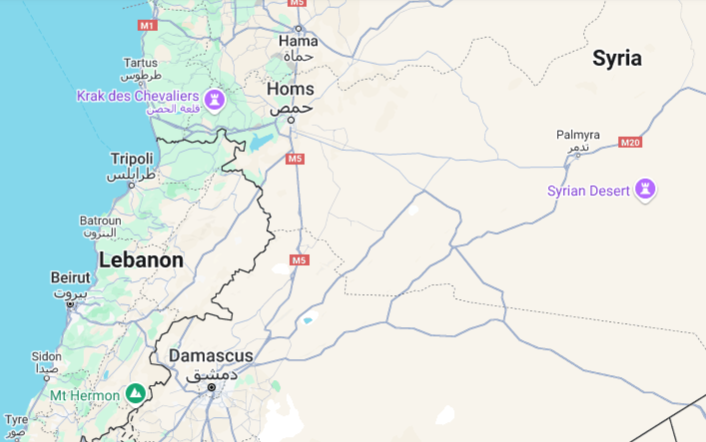Thousands of Syrians are fleeing the central city of Homs amid a swift rebel advance that threatens to bring yet another major urban center under antigovernment control, according to local monitoring groups and aid officials. The upheaval, which follows the recent fall of Hama and Aleppo to opposition forces, places much of central and northern Syria outside the grip of President Bashar al-Assad's regime. The Syrian Observatory for Human Rights (SOHR) said on Friday that throngs of displaced civilians started fleeing overnight, heading toward the western coastal regions still held by the government.
The rapid opposition gains are largely credited to fighters led by the Hayat Tahrir al-Sham (HTS) armed group, which captured two key towns-Rastan and Talbiseh-just north of Homs. Rami Abdel Rahman, head of the UK-based SOHR, said rebel fighters were only "5km (3 miles) from the outskirts of Homs city" following their recent victories. Homs, situated between Damascus and Assad's coastal strongholds, is considered a strategic crossroads; its capture would mark the loss of three of Syria's five largest cities to rebel forces in a matter of days.
Humanitarian officials are warning of escalating displacement as the frontlines shift. Samer AbdelJaber, head of emergency coordination at the UN's World Food Programme, said renewed fighting in Syria has displaced about "280,000 people in about a week," warning that numbers "could swell to 1.5 million" if the fighting intensifies. While these estimates cannot be independently verified, relief agencies are bracing for a deepening humanitarian crisis as families abandon their homes, seeking refuge in regions spared from the worst of the violence.
On the battlefield, the opposition has combined lightning ground assaults with strategic negotiations to consolidate power. "Our forces continue to advance towards the city of Homs at a steady pace, thanks to God, after the arrival of convoys carrying hundreds of displaced people from Homs to deter Assad's aggression against their city," said Hassan Abdul-Ghani, a senior commander of the HTS-led forces, in a social media post. The rebels' growing sophistication has come as no surprise to analysts who have observed their evolution since the civil war's earlier phases.
"The expansion of units... along with large-scale indigenous rocket and missile production -- has created a force that Assad's regime has seriously struggled to defend against, let alone outmaneuver," said Charles Lister, director of the Syria program at the Middle East Institute, in an online commentary. Lister also noted HTS's outreach to various groups, saying it "has negotiated with Shia and Sunni leaders, Kurdish groups and with regime military commanders, most resulting in peaceful takeovers, safe exits & some [publicly unacknowledged] regime defections."
The Assad government has responded with intensified aerial and artillery strikes aimed at slowing the rebels' push southward. The Syrian Ministry of Defence said its units targeted opposition fighters with "artillery fires, missiles and Syrian-Russian joint military aircraft." Witnesses and local media reported damage to critical infrastructure, including the strategic Rastan bridge on the main M5 highway linking Hama and Homs, allegedly destroyed by Russian bombing overnight to impede the rebel advance.
Separately, Israel launched air attacks on two border crossings between Syria and Lebanon, striking near the Arida and Jousiyeh crossings. Lebanon's Transport Minister Ali Hamieh told Reuters these were key routes into Homs governorate. Israel's military said it targeted "weapon-smuggling routes and terror infrastructure sites" used by the Iran-backed Hezbollah militia, a longtime ally of Assad. With Tehran now promising "missiles and drones" as well as "deploying forces" to bolster Assad's defenses, the conflict risks drawing in more regional actors.
Meanwhile, Syrian troops reportedly withdrew from eastern Deir Ezzor city and its surroundings, raising questions about the regime's ability to defend territories farther afield. Oil-rich Deir Ezzor, which straddles the Euphrates River, is divided between U.S.-backed Kurdish forces to the east and Iran-aligned government and Iraqi militias to the west. As security frays in central Syria, the rebel momentum may allow them to press onward, leaving the regime struggling to reinforce multiple collapsing fronts.






